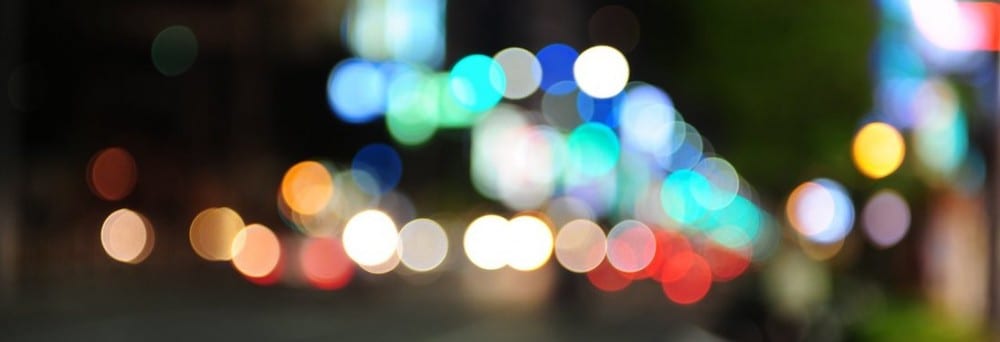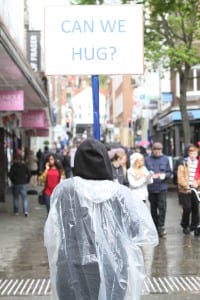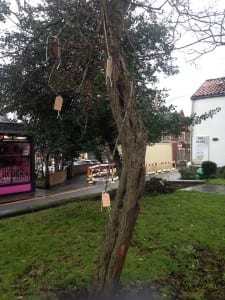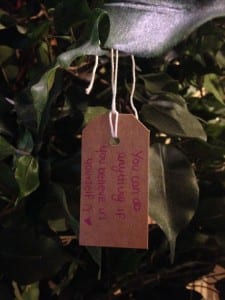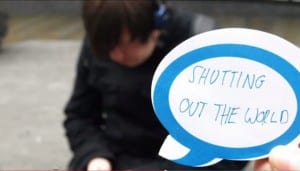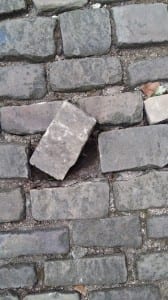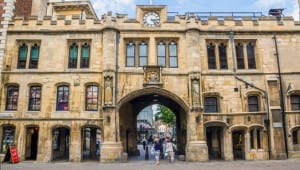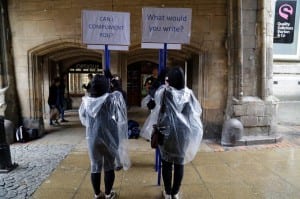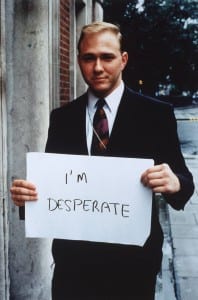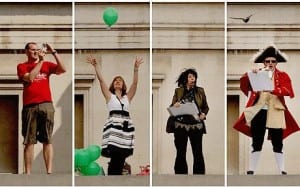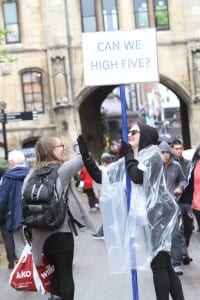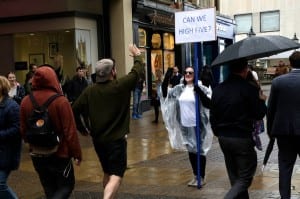A March against Consumerism
Framing Statement
We were asked to think about the topic of liberation and what this could mean. There are many different interpretations of liberation some personal, some general. We decided to use the high street as our site, as it is heavily populated throughout the day. This would work well as we wanted to liberate the public in some way. After looking into the high street as our site we realised that the public were being overtaken by consumerism. Nowadays, we live in a consumer culture, one that means the majority of people on the high street are there to spend money. “The norms of the culture of society in which the person has been bought up… [will] affect what the person will perceive of the situation.” (Redman,1979, 48). This shows this consumer culture getting worse especially for younger generations that may know no different. We decided to liberate these people from their everyday routines by offering the idea of a gift. The ‘gifts’ we decided on were high fives, compliments, hugs and then the final statement was originally unclear. After trialling several methods we finalised our fourth sign as ‘what would you write?’ We wanted it to be the most interactive of the signs. This meant that one side of the sign was blank whiteboard for the public to write whatever they wanted to express. We each held one sign for 30 minutes at a time, each at a different point of the high street. We started at the bottom with compliment as we felt this was the least interactive then gradually becoming more socially interactive with high five then hug and finally what would you write. This was with the idea that the consumer would make their way up the high street and encounter one of us the further up they went. After 30 minutes we all came together for a ‘changing of the guard’; this was a formal changeover of signs inspired by the royal changing of the guard at Buckingham Palace. After the changeover we each went back to the four stops and carried out another half hour with the new sign. Our piece began at 11am and finished early at 1.30pm due to weather conditions. The signs themselves were each 3ft, with the actual written part being a2. We wanted them large and high so that they were visually striking from a distance and so that the consumer could see each sign from any point on the high street. To ensure the piece ran smoothly we all wore synchronised watches so that the marching and change of the guard was perfectly timed and looked professional. This was contrasting to the 30 minutes stood alone as we interacted with people having informal conversations. Our costume was also a large part of the overall aesthetics of the piece; we all wanted to look unified meaning we wore the same. We chose black and white as these are neutral colours but then we added colour onto the signs to make them more inviting. We also had to take into account the timing of our piece, it was carried out on the 7th May, and this was the UK Election Day. We needed to ensure we did not look like we were canvassing something which is actually banned on the high street.
Analysis of Process
Dominique and I began the process by looking at Carl Lavery’s ‘25 instructions to perform in the city’. We decided to choose the task of leaving messages of enchantment and friendliness on trees around the city. We wanted to use the high street as we had already swayed towards having this as our site. We purchased old luggage tags to contrast against the pervasive media topic we had been asked to look at. We hand wrote these messages and took on our journey along the high street. The first tree we encountered was just off the high street. we attracted lots of attention whilst doing this activity. This made us think about looking at creating a reaction. Doing something out of the norm and observing that people are startled by it is something I found interesting. We carried on and chose a tree inside a local bar/restaurant, after asking permission we tied the messages.
We had one man come up during the process and read one, he replied “how lovely” and walked away smiling. We also liked the fact we were making a different to people’s days even if for a small moment. After completing this activity we fed back to the group and decided this was potentially something we could expand on for our final piece.
We were inspired by Tim Etchell’s 8 fragments. We looked into fragment 5, observation/coincidence. Etchell talks about the “endless possibilities of people passing each other in the street”. (Etchell and Phelen, 1999, 79) He discusses the possibility of going with that person and what would happen, how it would affect your life. We were especially intrigued by his take on the ‘escalator’ he describes this as a place “where we pass each other as objects on a production line”. The most interesting aspect of this was the observation of each other on an escalator as we get closer to meeting and then as Etchell discusses “we could speak, or even touch, our eyes drop and the moment passes” (Etchell and Phelen, 1999,79). We decided to create our own observation on based around Etchell’s work, we ventured to the high street and people watched. We decided to expand on our message idea and after observing people in town write down the first thing that comes to mind on a speech bubble.
This was an interesting task as it forced us to look up at people that we might normally just pass on the street. We created a video on our research.
The man in the video was especially thought-provoking as we watched the man hand out flyers in town and we were shocked by the amount of people who walk past and ignore him like he is not even there. Most people not even paying attention to what he was distributing, this posed us with the question what if he was handing out something incredible or life changing? People see him and automatically say ‘no’ or look down and avoid him. What if he was handing them a million pounds? They would never even know. I found this extremely interesting, society assumes you are trying to sell them something and they are not interested. They would not expect you to be doing something that just benefits them. We are constantly as a society trying to get from A to B, we rarely just stop and take notice to our surroundings.
We then tested this theory on an escalator offering out high fives, also shown in the video. We had absolutely no response a man even avoided us. After using these speech bubbles we came up with the idea of having large speech bubbles in town potentially blank for society’s thoughts to be broadcast. What if we wrote down our observations for the world to see? To show society or yourselves what image we are giving of to the rest of society. Would we be shocked at ourselves or would we still be disinterested? Could our piece make a difference and change a small aspect of how society views each other?
As our site is rather large we came to the realisation that we may need to pick certain aspect of the high street. ‘A Sardine street box of tricks’ highlights that choosing the right location is essential. To do this you need to be “hyper-sensitised to the flows, stories and textures of what is around you” (Persighetti and Smith, 2011, 12). We were inspired by the Situationists and there method of ‘drifting’, to drift is to aimlessly wander around, to not be on a specific route with a destination with no distractions and to make note of what you uncover. What do you notice about locations you may have been to several times before? We began to drift, we separated as a group and decided to meet together later in the day. Whilst drifting, I began to feel myself observing everything, thinking about people’s journeys. Where they were going? What they were doing and if I could disrupt this flow. I walked the full high street alone then we came together continuing up steep hill as at this point we had not ruled this area out of our site. Whilst up steep hill we discovered an out of place brick that had come apart from the others in the road. This individual brick changed the whole aesthetics of the road and made us think about the idea of being out of place. Foust and Jones believe the “consumer subjects are ‘in place’ performing properly” (Foust and Jones, 2008, 9) this links to the brick and how everything has its rightful place. We wanted to play with this idea as our gift –giving could be deemed as out of place on the high street.
Early on we decided to eliminate the use of pervasive media, we felt like we should add this into our liberation by liberating society from media as well as consumerism. Often the use of mobiles on the go is the reason for not paying attention and interacting with each other, therefore we eliminated this from our performance apart from to documents pictures of the day.
We stuck with the idea of giving out a ‘gift’, breaking people’s everyday routes and routines by offering something unexpected. We created a long list of potential ‘gifts’ we could give to society. We decided to have one each, high five, hug and compliment were the first three we felt would work well therefore we decided to go to our site as test out these gifts. We used a typed A4 sign and stood on the high street to see what reaction we drew. We included a few other options for the fourth sign as this was the sign we were unsure on. We gained a lot of positive feedback from our experiment and the reaction we wanted for the three signs. Unfortunately our other options of signs did not work as well, ‘Can I lend an ear?’ And ‘Can I help you?’ This may be as they are more open questions and the public may feel uncomfortable and that these signs are less approachable. The idea of conversing with a complete stranger is one that is quite alien to the public especially on the high street as people are set in a routine. This is what we as a group are trying to liberate the public from, therefore still having the fourth sign as a conversational gift I believe is still a good idea. We may need to look at the way we present the sign, making it more welcoming. As seen below we documented our reactions on video.
When on our site, I used the ‘can we hug?’ sign. I received a good reaction from this; some as expected just gave a quick hug with no talking and carried on with their daily routine. This is still a good outcome for us as we have still managed to break their everyday cycle even if for a fleeting moment. On the other hand, other members of the public stopped and asked us what we were doing then received the hug and thanked me for “brightening their day”. I encountered two older ladies (shown in video) who asked what I was doing, after I explained one gave me a hug yet the other was originally quite reluctant. After seeing her friend receive a hug and the positive reaction she changed her mind and decided to join in too. Both thanked me for making their day better and went on to apologise that they “were not 20 year old, young men”. We both shared laughter and they went on with their day. It was really nice to see how much a simple action like a hug can make a difference to someone’s mood.
Although several members of the public did not join in, most stared and smiled or discussed what we were doing amongst themselves. This again is still creating the overall outcome we wanted. As we are still breaking their social norm.
After this trial and the drifting we decided upon our four locations on the high street. We wanted the audience to be able to see all four signs from wherever they stand therefore we decided to begin at the bottom of the high street near HMV and then end at the top of the high street near Kind bar. Luckily there is the Stonebow that separates these two halves of the high street therefore this is where we decided to do our meeting and ‘change of the guard’. This means two people stand either side an equal distance apart then come together at the stone bow for the changing ritual.
We decided that we wanted the signs to remain in the same place starting with the most amount of separation (Can I compliment you). Then on the journey up the site the degree of separation decreases to high five, then hug, then finally a more personal sign that was yet to be decided. Debord explains that “The Phenomenon of separation is part of parcel of the unity of the world” (Debord, 1995, 13). We want to play with the idea of separation and keep this decrease a constant throughout the day therefore we would change the people holding the signs and not the signs themselves. This also worked as we were changing every 30 minutes meaning a member of the public may encounter one of us and then carry on their route however if we changed the signs they might continue to come across the same sign all the way up the high street. This is not the outcome we want as we want to see how far the audience will go with the different signs. Are they brave enough to encounter the fourth sign?
The decision of what to write on the fourth sign was a tough one and one that changed a lot throughout the process. We came across Gillian Wearing’s work on signs. Her piece “signs that say what you want them to say and not signs that say what someone else wants you to say” really inspired us. Strangers on the street were approached and asked “to write down something that was in their head” (Molon and Schwabsky, 2002, 28). Some of the outcomes were really interesting, what was more fascinating was the diversity of the responses. Some comical, political and emotional.
This picture especially intrigued me as the man photographed at first glance looks like a business man, respectable potentially wealthy yet interestingly enough the sign he is holding is ‘I’m desperate’. It is unclear about what he is desperate about but I feel this makes the picture more thought-provoking as you get to make your own judgements. After researching more into Wearing’s work we decided we definitely wanted to include the audience into the fourth sign. Whether it is confessions or just simply writing messages we felt this would be a perfect final sign to break down the barrier between us and the consumer.
Antony Gormely’s work on the fourth plinth helped us to confirm this idea. The fourth plinth is a platform for artwork in Trafalgar square. It was originally a space for a statue of William IV but was left blank due to insufficient funds. It then became a space for contemporary art to be displayed. Gormely’s piece ‘One and other’ that was performed on the plinth was inspiring. Gormely used a different member of the audience every hour as his art work; this member can do whatever they please. It invites people to be their own work of art. “The idea is that this will be a portrait of Britain made out of 2,400 hours of 2,400 people’s lives” (Sooke, 2009) This is exactly what we wanted to achieve with our fourth sign so we decided to keep it an open question, simply, what would you write? This offers the public to ask their own question, write a personal thought or just a statement to society.
We carried out a dress rehearsal the week before our final piece. This performance was not carried out at our site as we felt it would lose its impact on the day if the signs were seen before. We did however take the signs blank to our site to practice the changing of the guard. The reaction these signs created was more interesting, the public could not comprehend that we were holding blank signs. We had several people coming up and asking what we were ‘advertising’. They found it more peculiar to see blank canvases then to see adverts, this is an example of how consumerism has taken over the public.
.
Performance Evaluation
We arrived at our location at 11am ready to begin, we decided to put our waterproof ponchos over our ‘uniform’ as it was slightly raining and was predicted to rain later in the day. We wanted to look united therefore we decided to keep the ponchos on all day so it did not look messy taking them off and on. For the first 30 minutes I held the ‘can we hug?’ sign, this was my favourite time of the whole performance. I had such a positive reaction, lots of people stating thing such as “you’ve made me smile”. The day took many different turns, some stages where no one would approach for a long time and others where we were inundated with high fives and hugs etc. There were some personal responses and some that were not as interactive. The most memorable response was when I complimented a lady’s necklace, she then let me into a personal story that she may not have otherwise shared about a man she once loved giving her the necklace. This story really made me think about how if I had not been doing this performance she may not have shared it with people. This is exactly what we wanted as it also made her think, she was very interested in the message behind our piece. I then went on to tell her the point of our performance and she agreed completely. She hates pervasive media for the very reason it has stopped people just simply conversing like myself and her. The changing of the guard ritual worked very well, although one member of our group did remove her poncho, this is my opinion did affect the piece as we lost our unified look. However, as the rest of the group we did decide to remain in ponchos as the weather took a turn for the worst and the rain did pour heavily. I thought the weather would affect the response we gained and although the number did decrease during the rain, it was shocking the amount of people that still wanted to stop in the pouring rain to receive a ‘gift’. In future a performance such as this, I believe should be longer in duration. We did have to cut it short due to the weather, however if we were to redo it on another day it would be interesting to see if the time of day changes the responses we receive. Overall, I believe we were successful in breaking people’s everyday routines and breaking consumerism even if for a fleeting moment.
Word Count 3,267
Bibliography
Debord, G. (1992) Society of the Spectacle and Other Films. London: Rebel Press.
Foust, C. and Jones, R. (2008) Staging and Enforcing Consumerism in the City: The Performance of Othering on the 16th Street Mall. Liminalities: A Journal of Performance Studies, 4 (1) 1-28.
Hardman, R. (2009) Now there’s a poo on the Trafalgar square fourth plinth [online image]. Available from:http://www.dailymail.co.uk/news/article-1197704/Now-theres-poo-Trafalgar-Squares-fourth-plinth.html [Accessed May 10th 2015]
Lavery, C. (2005) Teaching Performance Studies: 25 Instructions for performance in cities. Studies in Theatre and Performance, 25(3) 229-238.
Molon, D and Schwabdky, B. (2002) Mass Observation: [accompanies the exhibition organized by the by the Museum of contemporary Art, Chicago]. London: Merrell Publishers.
Redman.(1979) Consumer behaviour: theory and applications. London.
Sooke, A. (2009) Antony Gormley’s Fourth Plinth, Trafalgar Square. The Telegraph, 26 Feb. [Accessed Online] at: http://www.telegraph.co.uk/culture/4838343/Antony-Gormleys-Fourth-Plinth-Trafalgar-Square.html
Persighetti, S. and Smith, P. (2011) A Sardine Street Box of Tricks. Plymouth: Blurb Inc.
Sabrina290694 (2015) Georgia Hug 2 [online video] Available from https://www.youtube.com/watch?v=MT8VZ5QwDxI [Accessed 20th March 2015]
Tate, (1993) Gillian Wearing OBE. [Online image] London: Tate. Available from: http://www.tate.org.uk/art/artworks/wearing-im-desperate-p78348
Visit Lincoln (2012) Guildhall and the Stonebow. [Online image] Lincoln: Visit Lincoln. Available from: http://www.visitlincoln.com/things-to-do/guildhall-and-stonebow [Accessed 14th May 2015].
